I love books like A Curious Collection of Dangerous Creatures, An Illustrated Encyclopedia. It’s an entertaining reference book with dozens of critters that I hope to never encounter and that students are intrigued by. This is the sort of book that will hook mid to upper-elementary school students who have caught the ‘animal bug’ and need to do those first essays. As a saving grace to those educators who have to read or listen to those essays, A Curious Collection of Dangerous Creatures has multiple dozens of them that they haven’t heard of before. The odds of having your educator’s eyes gloss over because you’ve heard about the Brazilian Death Beetle one too many times.
A Curious Collection of Dangerous Creatures is the sister book to A Curious Collection of Peculiar Creatures. We liked that book too. The only difference between the two is that one of the books has critters who are more peculiar, and one has beasts who are more likely to kill you. For the record, the first book has the same layout, sense of intelligence, and realistic illustrations. Young audiences will welcome the fact that the book’s illustrations are different too.
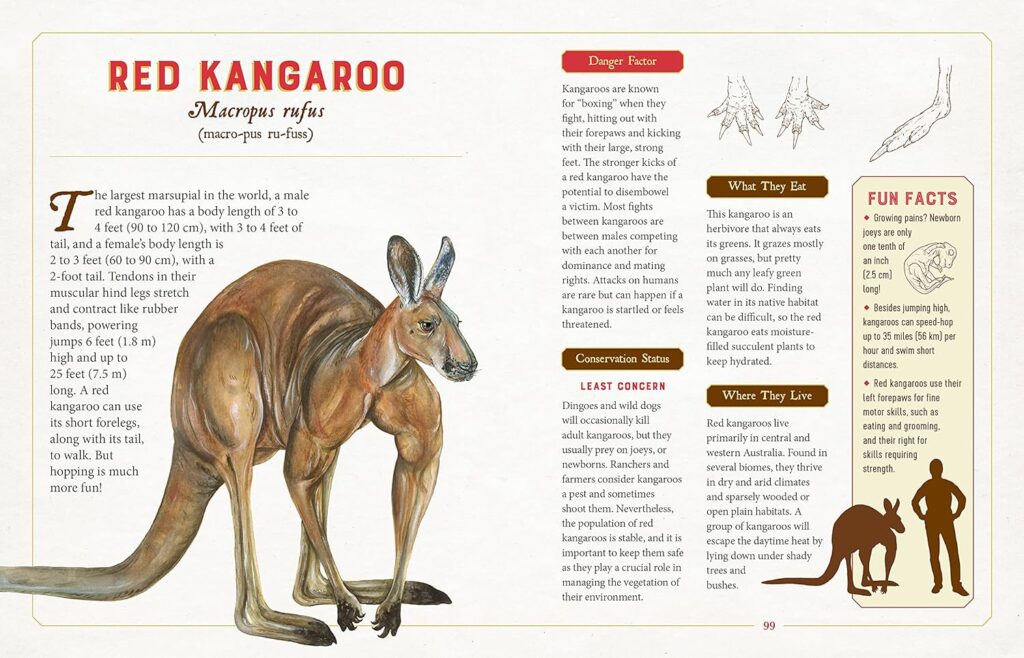
Those ages tend to gravitate towards one style of book. It’s the 500 pound gorilla in the kidlit, reference book world, Nat Geo Kids. They are great books, however, most of them have a distinct style and a sweet spot that allows them to be the go-to, and unfortunately in some cases, the only style of reference books that elementary schools will have. Thus, it’s refreshing to have a different style of book that will entertain and educate those readers who want to learn about animals and need to learn to read.
The only animal that I’ve seen in A Curious Collection of Dangerous Creatures in real life was the moose, Alces americanus. My wife and I were driving in the Rocky Mountains near Vail, Colorado. It was deep in the mountains on a very narrow road that led down to a lake. As we were driving down that gauntlet we saw a moose exit the forest and stand in the middle of the road.
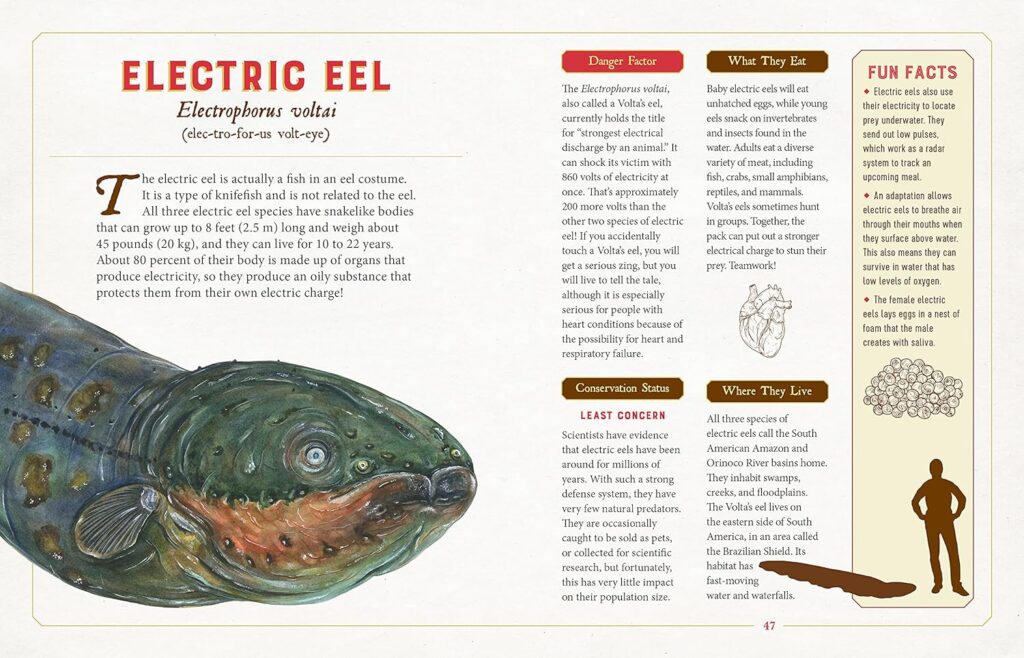
Its size was so alien that we both did a double-take. Once it fully left the tree line it occupied the entire width of the road. It was a combination of amazement as to its size, quickly followed by fear. The fear originated by the fact that if this massive animal was agitated by the color of our car, saw prey or just felt like running toward us then the damage would’ve been amazing. The moose thankfully sauntered off back into the woods, but did so before I could reach for my camera.
This book is loaded with scary and dangerous creatures, big and small. The Oriental Rat Flea sucks blood from rats and then bites humans. Its innocuous-looking enough, but inspired the crow-like mask that people wore during the bubonic plague and resembles the ones that Ghost wore for a moment. The Electric Eel, Giant Otter, Vampire Bat, Red Kangaroo, and many more are in here too. The table of contents is alphabetized and the animals are listed in the book in that same manner.
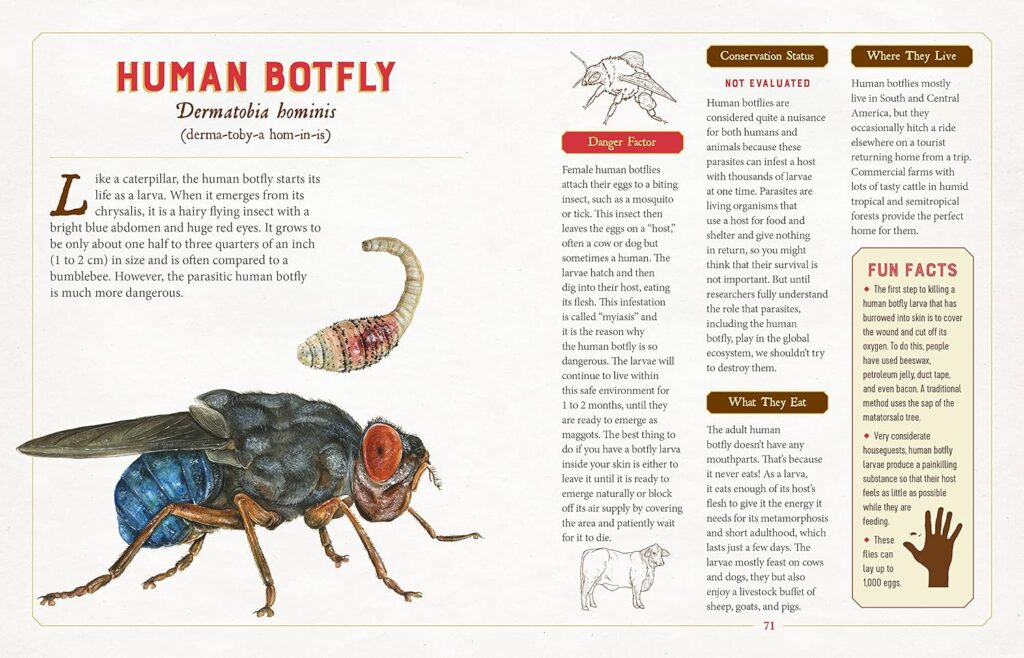
Most of the creatures in the book are small, disgusting, and scary. It’s also refreshing because they’re not the same disgusting and deadly creatures that elementary kids will clamor for. For example, the Pork Tapeworm. Its illustration is disgusting and has a shiny glimmer that alludes to it slithering into the intestines of some swine.
Personally, the scare and disgusting factors were somewhat mitigated when I saw the pages on the Tiger Pufferfish. In Asia this fella is called Fugu when it’s on land. It’s an expensive dish that cost just under $100 a plate in the late 90’s and wasn’t that memorable. As Homer Simpson taught us in season Ttwo, episode 11 of The Simpsons, the fish is poisonous if not cut precisely, so be careful.
Elementary ages will respect the way in which the book presents itself and treats them as intelligent. They’ll see the resources at the end of the book, and even though they may not do any more research, they know it’s there. A Curious Collection of Dangerous Creatures, An Illustrated Encyclopedia is a smart, action-packed book that will hit the imagination of ages eight and up. Those young ages might not be able to read all the content and understand it without assistance, but the fangs, pointy bits, talons and scale of the critters will make them want to keep digging. The unexpected audiences are those middle school students who want to do a deep dive on predator/prey relationships or physical adaptations that will go above and beyond what their teachers are expecting.
A Curious Collection of Dangerous Creatures: An Illustrated Encyclopedia is by Sami Bayly and available on The Experiment, an imprint of Workman Publishing.
There are affiliate links in this post.

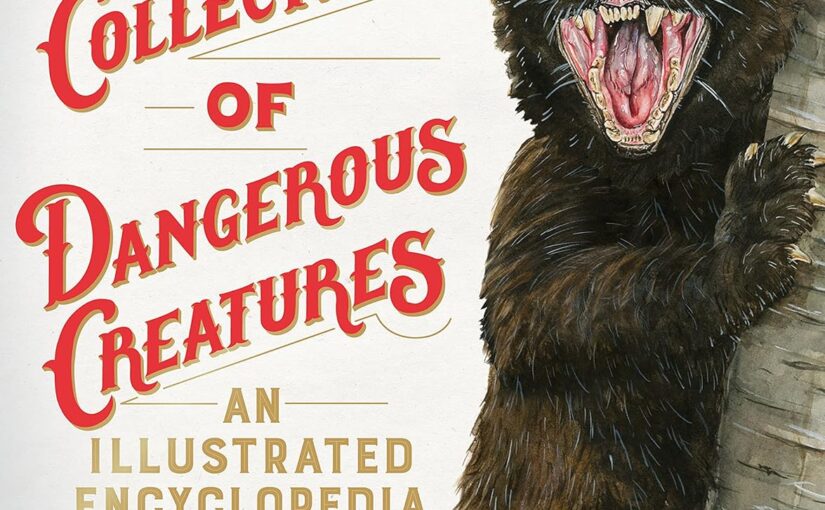
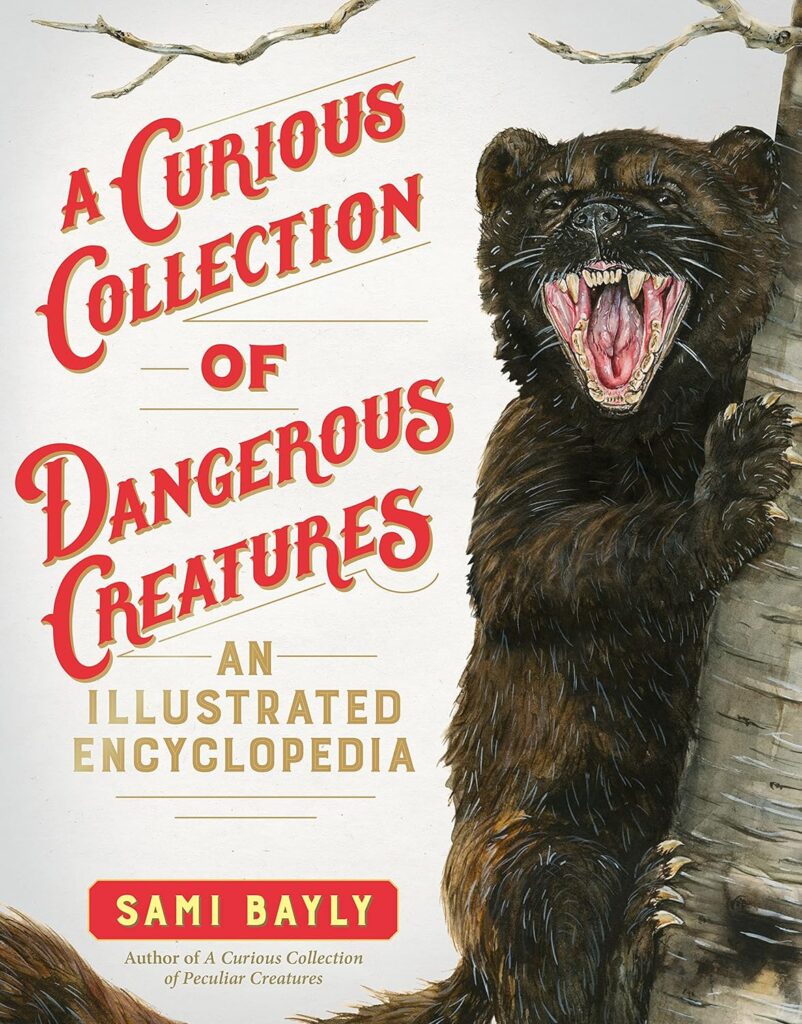



 Facebook
Facebook Twitter
Twitter Flickr
Flickr GooglePlus
GooglePlus Youtube
Youtube